SIGN UP FOR NEWSLETTER
Be the First to Know. Sign up to newsletter today
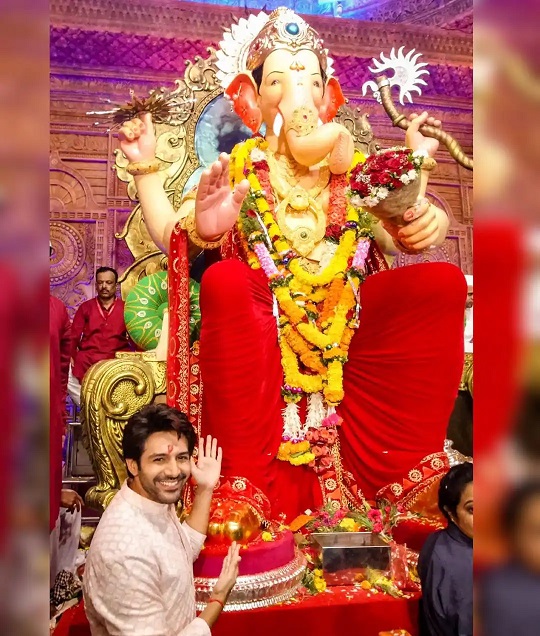
Monika Chauhan
694 views
add comment
Hindus invoke Lord Ganesha at the beginning of every occasion.All invitations to Hindu weddings, religious ceremonies and functions start with the following prayer to Lord Ganesha. Dancers and musicians begin performances with a prayer to Ganesha.
“Vakra-Tunndda Maha-Kaaya Suurya-Kotti Samaprabha | Nirvighnam Kuru Me Deva Sarva-Kaaryessu Sarvadaa” . It is a Vedic prayer to Lord Ganesha .
Translation- “O Lord Ganesha, whose trunk is curved, and whose body is magnificent, possessing the brilliance of a million suns, I pray to you to remove all obstacles and make all my endeavors successful, always”.
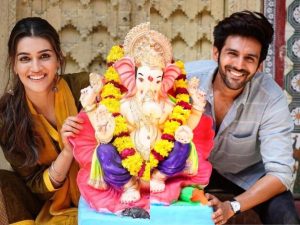
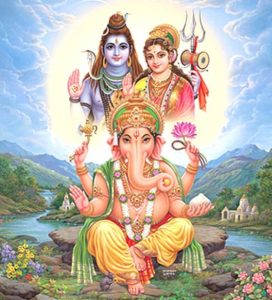
According to Hindu mythology, Lord Ganesha is the son of Lord Shiva and Goddess Parvati. The story of his birth is both fascinating and symbolic. It is said that Goddess Parvati created Ganesha from the sandalwood paste she used for her bath and breathed life into him.

She then instructed him to guard the entrance while she bathed. When Lord Shiva returned and was denied entry by Ganesha, a fierce battle ensued, resulting in Ganesha’s head being severed. To pacify the grieving Parvati, Shiva replaced Ganesha’s head with that of an elephant, thus giving him his distinctive appearance.

Lord Ganesha, is known by several other names such as Ganapati, Vigneshwara (remover of obstacles) ,Ekadanta, (the Lord with one tusk),Lambodara (pot bellied one )& so on.
Here’s a more detailed look at Lord Ganesha:
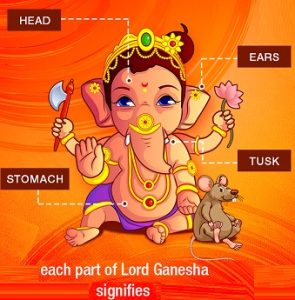
Key Characteristics and Symbolism:
Ganesh Chaturthi is celebrated with immense devotion and enthusiasm across India, particularly in the states of Maharashtra, Karnataka, Tamil Nadu, and Andhra Pradesh. The festival usually falls in the Hindu month of Bhadrapada, which corresponds to August or September in the Gregorian calendar. The celebrations last for ten days, starting on the fourth day (chaturthi meaning 4th day) of the waxing moon period

8th-century Ganesha sculpture in Cham Museum Danang, Central Vietnam
In the Burmese language, Ganesha is known as Maha Peinne . References to Ganesha can be found in Thailand, Indonesia, Cambodia, Vietnam & Sri lanka.
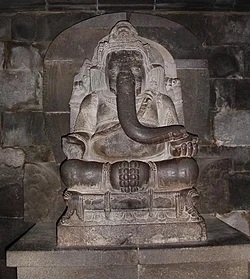
9th-century Ganesha Statue in Prambanan, Java, Indonesia
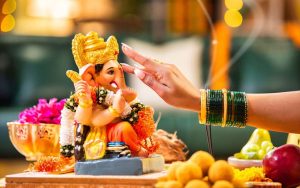
He is in fact, the most admired & revered of the Hindu Gods . Every Hindu home would have at least one idol of Ganesha if not more
Ganesha is a popular figure in Indian Art. He may be portrayed as sitting, standing or dancing. There are 6th-century Ganesha Statue in Badami caves temples, depicting Ganesha with two arms.
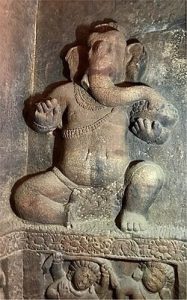
Ganesha in Bronze from 13th century Vijayanagara Empire, depicts Ganesha with four arms.
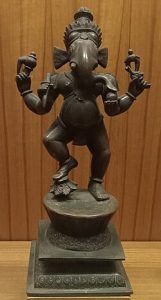
The festivities begin with the installation of beautifully crafted Ganesha idols in homes and public pandals (temporary structures).Local communities are involved in creating & decorating the idols. Devotees offer prayers, sing hymns, and perform aarti (a ritual of worship with lamps) to seek the blessings of Lord Ganesha. The idols are adorned with flowers, garlands, and sweets.Devotees offer Ganesha sweets such as modaka and small sweet balls called laddus. He is often shown carrying a bowl of sweets, called a modakapātra. Dūrvā grass (Cynodon dactylon) and other materials are also used in his worship.[]
If you are looking for the best time to visit Maharashtra, Ganesh Chaturthi is a festive time to do so .
The festival boasts of its origins in the city of Pune (around 125+ years ago). It was primarily started to unite different communities against the British rule.Over the years, the festival has spread far and wide to the neighbouring states of Andhra Pradesh, Tamil Nadu, Telangana, Karnataka and Goa as well.
Mumbai, the financial capital of India, is renowned for its grand and elaborate Ganesh Chaturthi celebrations. The city comes alive with vibrant decorations, prayers & puja rituals, music, dance & processions during this festival. Most of the localities have some form of celebration where the community gathers.The city turns festive for a week.
Some of the most famous Ganesh Chaturthi celebrations in Mumbai include the following.
The Shree Siddhivinayak temple, located in the central south Mumbai in the neighborhood of Prabhadevi area , particularly pulls in a lot of crowd. The main attraction of the temple is ‘Kakad Aarti’ which is a special Aarti .Kakad is a special lamp that is shown to the Lord to wake him up at 5 am. Aarti is performed with lamp and or camphor. This is to reflect the lamp light on the idol and to purify the atmosphere .

The following are the top 6 Ganesh pandals in the city of Mumbai. In other words, these pandals usually turn the city into a tourist attraction, with lakhs of devotees joining in the celebrations. Each idol is decorated distinctly.They encourage cultural activities and participation of all age groups in the festivities. Celebrities such as Sachin Tendulkar and Bollywood actors & actresses visit the pandals.

This is one of the most popular Sarvajanik Ganapati in the ‘Maximum’ city. An ocean of devotees visit the majestic pandal every year as Lalbaugcha Raja is widely considered a Navsacha Ganpati (one who fulfills all wishes).
The immersion of the idol takes place in the Arabian Sea at Girgaum Chowpatty on the auspicious day of Anant Chaturdashi.
Location: 3, Dr Baba Saheb Ambedkar Rd, Shree Ganesh Nagar, Lal Baug, Parel, Mumbai, Maharashtra 400012
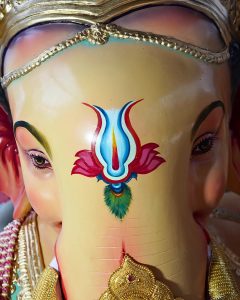
This is one of the oldest and renowned Ganesh pandals in Mumbai. This year, the pandal will be completing 96 years in the city. The pandal introduces unique themes every year.
Location: 1, Ganesh Nagar Ln, Lal Baug, Parel, Mumbai, Maharashtra 400012
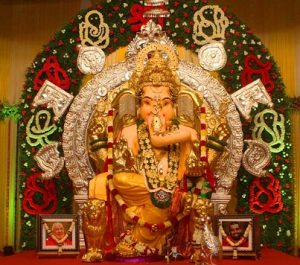
Founded in 1954, this pandal is popular as the richest pandal in the city of Mumbai. Wondering why? Well, the Ganesh idol here is beautified with more than 60 kg of pure gold. Further, if you wish to be a part of traditional South Indian dance and music performance, this pandal is where you should be heading to. However, this pandal stays only for the first five days. Devotees take the idol for immersion on the sixth day instead of the usual 10th day.
Location: Bhookailash Nagar Near Sion Fort, Sion East, Sion, Mumbai, Maharashtra 400022
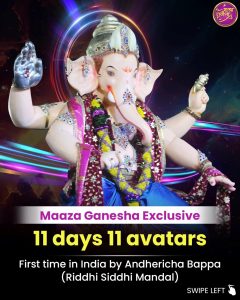
Founded in 1966, this idol is the Laulbagcha Raja of Mumbai suburbs. The pandal is also popular among notable celebrities including Bollywood actors in the city. The immersion of the Ganesh idol takes place after 21 days unlike other pandals.
Location: 4RHP+WH8, Azadnagar Sarvajanik Utsav Samiti, Ganesh Maidan, Azad Nagar II, Veera Desai Rd, Andheri West, Mumbai, Maharashtra 400053
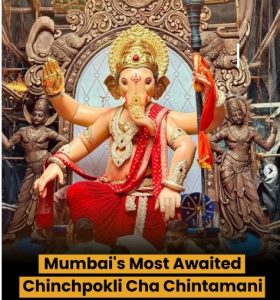
Now, let’s take you through the oldest pandal in Mumbai. It was established in the year 1920 by the Chinchpokli Sarvajanik Utsav Mandal. The name “Chintamani” comes from its attribute of taking away all worries of a devotee. Interestingly, it was the first mandal in South Mumbai. For the 10-day long celebration, as many as 4,000 houses in Chinchpokli contribute towards the funds.
Location: Dattaram Lad Marg, Chinchpokli, Mumbai, Maharashtra 400012
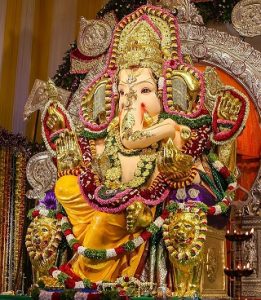
Khetwadi Ganraj, established in 1959 by the 12th Khetwadi S.G.M., is one of the oldest and prominent pandals in South Mumbai. Located in the creative Khetwadi area, it is known for its impressive idols and themes, particularly the Khetwadi 2nd and 3rd Lane Mandal, which often features Ganesh idols in divine Vishnu form alongside Goddess Lakshmi.
Location : 12th Lane, Behind Road & 12th Lane Sarvajanik Ganeshotsav Mandal 17, Girgaon, Mumbai – 400004
One of the most captivating aspects of Ganesh Chaturthi is the grand processions that take place on the final day of the festival. Devotees carry the idols to nearby rivers, lakes, or the sea for immersion, symbolizing the deity’s return to his celestial abode. The air is filled with chants of “Ganpati Bappa Morya” as people bid farewell to their beloved god, with a promise to welcome him again the following year.
The popular Hindu deity is not just present in temples across the country as the bestower of prosperity. But Lord Ganesh is very much there on the dashboards in cars, pen stands, key-chains and other showpiece items too. In fact, the popularity of brand Ganesha has not left the jewellery zone untouched. Some people wear a pendant or a ring with the inscription, everyday.
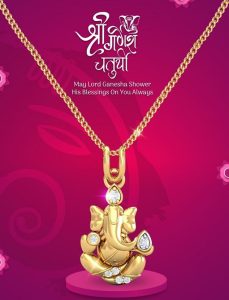
According to top jewellery brands, Ganesh accessories are the bestsellers, especially among the millennials. The popular belief being that wearing Ganesh symbol brings good luck and prosperity.A wide range of Ganesh-themed jewellery are on offer this festive season too. From a silver jhumki earrings adorned with Ganesh painting to gorgeous temple jewellery with Ganesh motifs, there is no dearth of options for those who stick to brand Ganesh.
Further, an attractive range of temple jewellery with Ganesha motifs in real gold comes with a starting price of ₹1.5 lakhs. The jewellery brands make sure to modify their designs to cater to varied customers every now and then.And not just festive occasions like Ganesha Chaturthi, the modern generation loves to accentuate its overall look with Ganesh-themed T shirts, earrings and necklaces on other special events too (like a get-together or an evening party).
In recent years, there has been a growing awareness of the environmental impact of Ganesh Chaturthi celebrations. Mumbai has been at the forefront of promoting eco-friendly practices during the festival. Some of the initiatives include:
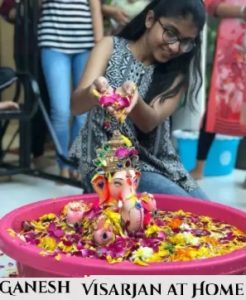
Ganesh Chaturthi is a festival that brings people together in a spirit of devotion, joy, and community. It is a time to seek the blessings of Lord Ganesha, celebrate cultural traditions, and reflect on the importance of sustainability. As we immerse ourselves in the festivities, let us also remember to honour the environment and ensure that our celebrations leave a positive impact for future generations.
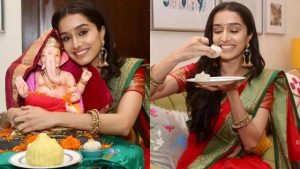
Festive Look
NAUVARI SAREE -THE MAHARASHTRIAN SAREE LOOK
Festival Blog
Be the First to Know. Sign up to newsletter today